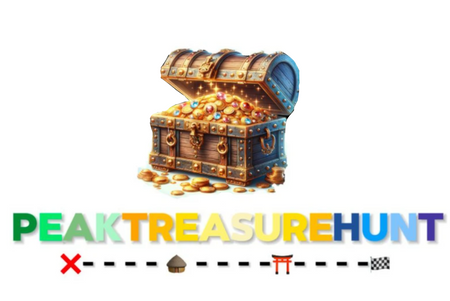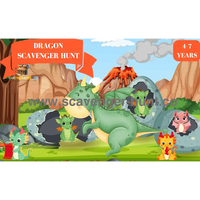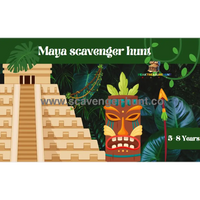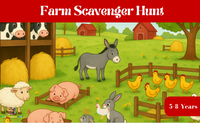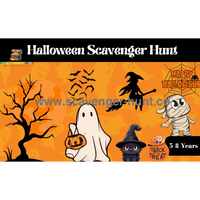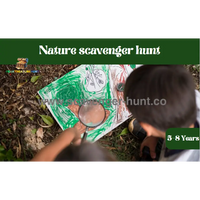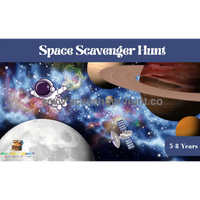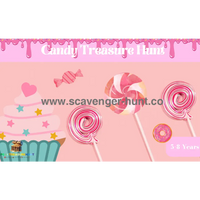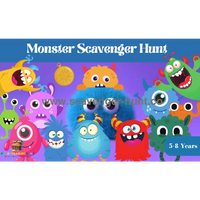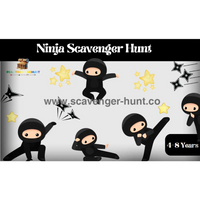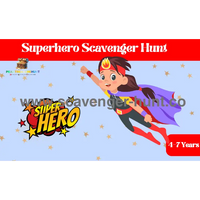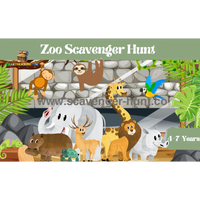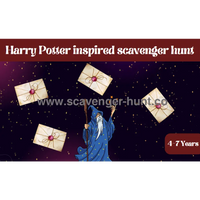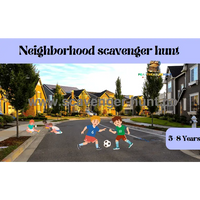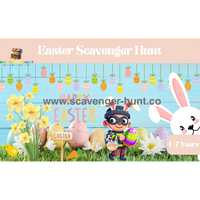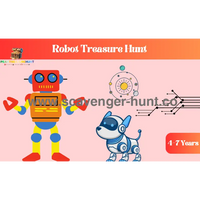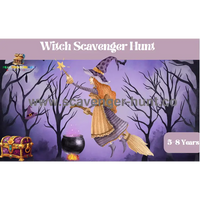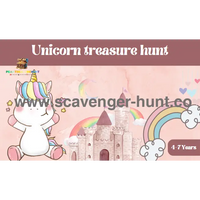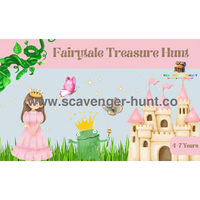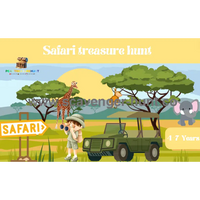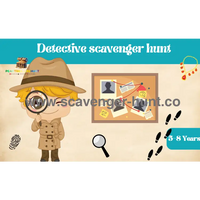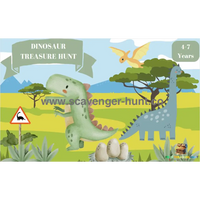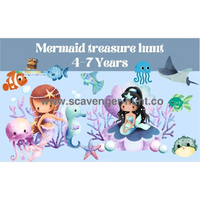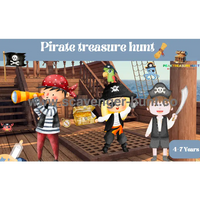🙌The Exciting World of Scavenger Hunts: Tips, Ideas, and FAQs
Scavenger hunts are a fantastic way to engage groups of people in an exciting, interactive activity. Whether you're planning a team-building exercise, a birthday party, or an educational outing, scavenger hunts offer endless possibilities for fun and learning. In this comprehensive guide, we'll answer all your questions about scavenger hunts and provide tips for creating an unforgettable experience.
What is a Scavenger Hunt?
A scavenger hunt is a thrilling and engaging game where players or teams are tasked with finding specific items or completing a series of tasks within a predetermined timeframe. This interactive activity is designed to challenge participants' creativity, problem-solving skills, and ability to work under pressure. The primary objective of a scavenger hunt is to gather all the listed items or accomplish all the given tasks before time runs out.
Scavenger hunts are incredibly versatile and can be adapted to suit various environments and purposes. They can be conducted indoors, utilizing spaces like homes, offices, or event halls, making them perfect for rainy days or structured environments. Alternatively, they can take place outdoors in settings such as parks, neighborhoods, or cityscapes, adding an element of exploration and adventure. In today's digital age, scavenger hunts have also evolved to include online versions, where participants complete virtual tasks or find digital items, making them accessible from anywhere in the world.
One of the greatest advantages of scavenger hunts is their adaptability to different age groups and interests. For children, the hunt can be simple and focused on fun, with easy-to-find items and straightforward tasks. For teenagers and adults, the complexity can be increased with challenging riddles, elaborate clues, and tasks that require higher levels of critical thinking. This makes scavenger hunts a popular choice for diverse occasions, including birthday parties, corporate team-building events, school outings, and family gatherings.
Furthermore, scavenger hunts can be customized to align with various themes and educational goals. For instance, a nature-themed hunt might involve finding specific types of plants or animals, encouraging participants to learn about the environment. A historical scavenger hunt could include visiting landmarks and answering questions about their significance, blending entertainment with education.
In summary, a scavenger hunt is a dynamic and enjoyable game that fosters teamwork, sharpens problem-solving abilities, and provides endless opportunities for fun and learning. Its flexibility in terms of location, age group, and theme makes it a beloved activity for people of all ages and backgrounds. Whether you are looking to plan an indoor event, an outdoor adventure, or a virtual challenge, a scavenger hunt can be tailored to meet your needs and create lasting memories for all participants.
Discover our Complete Scavenger Hunts Collection.
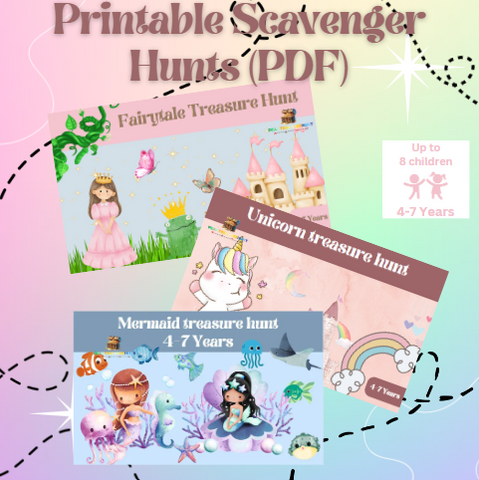

How Do You Organize a Scavenger Hunt?
Organizing a scavenger hunt can be an exciting and rewarding process, but it requires careful planning and attention to detail to ensure a smooth and enjoyable experience for all participants. Here are several key steps to help you organize a successful scavenger hunt:
Choose a Theme
Selecting a theme for your scavenger hunt can add an extra layer of fun and help guide the types of items or tasks you include. A well-chosen theme can create a cohesive experience and make the hunt more engaging. Popular themes include:
-
Nature: Encourage participants to explore the great outdoors and find natural items like leaves, rocks, and flowers.
-
Holidays: Incorporate seasonal elements such as Easter eggs, Halloween decorations, or Christmas ornaments.
-
History: Focus on historical landmarks or significant events, perfect for educational hunts in museums or historical sites.
-
Pop Culture: Base the hunt on popular movies, TV shows, books, or celebrities to captivate fans and enthusiasts.
Create a List
Developing a comprehensive list of items to find or tasks to complete is crucial. Make sure the list is challenging yet achievable, tailored to the age group and abilities of the participants. Items and tasks can vary widely, including:
-
Physical Objects: Simple items like a pinecone, a red balloon, or a unique coin.
-
Photo Challenges: Tasks that require participants to take pictures with specific objects, locations, or people, such as a statue, a fountain, or a friendly stranger.
-
Clues and Riddles: Add complexity with riddles or clues that lead to the next item or location, enhancing the problem-solving aspect of the hunt.
Set Boundaries
Defining the search area is essential to ensure participants stay within a manageable and safe zone. The boundaries can be as expansive or limited as needed, depending on the setting and the age of the participants. Examples include:
-
Parks: Ideal for nature-themed hunts with clear, natural boundaries.
-
Neighborhoods: Great for community events, allowing exploration of local landmarks and hidden gems.
-
Buildings: Perfect for indoor hunts, such as schools, offices, or event halls, providing a controlled environment.
Establish Rules
Clear and concise rules are vital for maintaining order and ensuring fair play. Make sure all participants understand the guidelines before the hunt begins. Key rules to establish include:
-
Item Requirements: Specify how many items need to be found or tasks to be completed.
-
Proof of Completion: Determine how participants will prove they have found an item or completed a task, such as taking photos, bringing items back, or getting signatures.
-
Time Limit: Set a clear time limit for the hunt to add excitement and urgency.
Gather Supplies
Ensure that participants have all the necessary supplies to successfully complete the scavenger hunt. Essential items might include:
-
Bags or Containers: For collecting physical objects.
-
Notepads and Pens: For jotting down clues or checking off completed tasks.
-
Cameras or Smartphones: For taking photos or videos as proof of completion.
-
Maps or Guides: If the hunt covers a large area, providing maps can be very helpful.
Plan for Safety
Safety should always be a top priority, especially if children are involved or if the hunt covers a large or unfamiliar area. Consider the following safety measures:
-
Supervision: Ensure adequate adult supervision for children's hunts, with designated check-in points and contact information for emergencies.
-
First Aid: Have a basic first aid kit on hand and be aware of the nearest medical facilities.
-
Clear Boundaries: Clearly communicate the boundaries and any off-limits areas to prevent participants from getting lost or entering unsafe zones.
By following these detailed steps, you can organize a scavenger hunt that is not only fun and engaging but also safe and well-coordinated. Whether it's for a special event, educational purpose, or just a fun day out, a well-planned scavenger hunt can create lasting memories for all participants.
What are Some Creative Scavenger Hunt Ideas?
Scavenger hunts can be customized in countless ways to suit different themes, settings, and participant preferences. Here are several creative scavenger hunt ideas to inspire your next event, each designed to add excitement and challenge to the game:
Nature Hunt
A nature scavenger hunt encourages participants to explore the great outdoors and connect with the natural environment. This type of hunt is perfect for parks, forests, or even neighborhood gardens. Items to find can include:
-
Leaves: Different types or colors of leaves, encouraging participants to learn about various trees.
-
Rocks: Unusually shaped or colored rocks that add an element of geology.
-
Insects: Common bugs like ants, butterflies, or beetles, promoting an understanding of local wildlife.
-
Flowers: Specific types of flowers or a variety of blooms, fostering botanical knowledge.
Photo Hunt
A photo scavenger hunt tasks participants with capturing specific moments or items using a camera or smartphone. This hunt is great for urban areas, events, or anywhere with interesting landmarks and people. Tasks might include:
-
Selfies with Landmarks: Taking selfies with famous statues, buildings, or natural wonders.
-
Group Photos with Strangers: Encouraging social interaction by getting group photos with friendly strangers.
-
Creative Poses: Posing creatively with certain items or in specific locations, adding an artistic twist.
-
Action Shots: Capturing dynamic activities like jumping in front of a fountain or mimicking a statue's pose.
Puzzle Hunt
A puzzle scavenger hunt combines the thrill of a traditional hunt with the challenge of solving puzzles. Each found item provides a clue or piece of a larger puzzle that participants must solve to win. This type of hunt can include:
-
Riddles: Clues written as riddles that lead to the next item or location.
-
Piece-by-Piece Puzzles: Collecting pieces of a jigsaw puzzle that participants assemble at the end.
-
Code Breakers: Finding items with coded messages that need to be deciphered.
-
Sequential Clues: A series of clues that must be followed in order, each leading to the next location.
Holiday Hunt
A holiday-themed scavenger hunt focuses on seasonal festivities, making it perfect for parties and family gatherings. Depending on the holiday, tasks and items can be adapted to fit the theme. Examples include:
-
Easter Egg Hunt: Finding hidden Easter eggs, each containing a treat or a clue.
-
Christmas Decoration Hunt: Locating specific Christmas decorations, like ornaments, stockings, or lights.
-
Halloween Hunt: Gathering spooky items like mini pumpkins, fake spiders, or costume accessories.
-
Valentine's Day Hunt: Searching for heart-shaped items, love notes, or candy.
Virtual Hunt
A virtual scavenger hunt is conducted online, making it accessible to participants from different locations. This modern twist on the traditional hunt can include digital tasks and items to find within participants' homes or online. Ideas for a virtual hunt include:
-
Household Items: Finding common household items like a blue pen, a book with a red cover, or a kitchen utensil.
-
Online Challenges: Completing online tasks such as finding a specific website, watching a short video, or answering trivia questions.
-
Photo Uploads: Taking photos of specific items or scenarios and uploading them to a shared platform.
-
Video Tasks: Recording short videos performing certain activities, like singing a song or reenacting a scene from a movie.
Themed Character Hunt
Participants search for items or complete tasks related to a specific character or series, adding a layer of fandom excitement. This type of hunt can include:
-
Harry Potter Hunt: Finding items like a wand, a potion bottle, or a book of spells.
-
Superhero Hunt: Locating items like a cape, a mask, or action figures of famous superheroes.
-
Mystery Hunt: Inspired by detective stories, where participants gather clues to solve a fictional mystery.
By incorporating these creative ideas, you can design a scavenger hunt that is not only fun and engaging but also tailored to the interests and abilities of your participants. Whether it's an outdoor adventure, an indoor challenge, or a virtual quest, a well-planned scavenger hunt can provide a memorable experience for everyone involved.
Discover our Complete Scavenger Hunts Collection.


What are the Benefits of Scavenger Hunts?
Scavenger hunts are more than just a fun activity; they offer a wide range of benefits that can positively impact participants in various ways. Here are some of the key benefits of organizing and participating in scavenger hunts:
Team Building
Scavenger hunts are an excellent tool for fostering teamwork and collaboration. Whether it's in a corporate setting, a classroom, or among friends and family, these hunts require participants to work together to achieve common goals. The benefits include:
-
Improved Communication: Teams must discuss strategies, share information, and coordinate actions, enhancing their communication skills.
-
Enhanced Cooperation: Success in a scavenger hunt often depends on the ability to work cooperatively, leveraging each team member's strengths.
-
Problem-Solving Skills: Teams encounter various challenges and must brainstorm solutions, fostering critical thinking and problem-solving abilities.
Exercise
Many scavenger hunts involve physical activity, which is great for promoting health and fitness. Participants often walk, run, or even climb to find items or complete tasks, providing a fun way to get moving. The physical benefits include:
-
Cardiovascular Health: Engaging in physical activities like walking or running helps improve heart health and stamina.
-
Strength and Flexibility: Certain tasks may require lifting, bending, or stretching, which can enhance muscle strength and flexibility.
-
Outdoor Activity: Outdoor hunts encourage participants to spend time in nature, benefiting their mental well-being and reducing stress levels.
Education
Scavenger hunts can be designed to be educational, making learning interactive and engaging. They can be tailored to teach participants about specific topics, such as history, science, or literature. Educational benefits include:
-
Knowledge Acquisition: Participants learn new facts and information related to the theme of the hunt, such as historical landmarks, plant species, or scientific concepts.
-
Critical Thinking: Solving clues and puzzles requires participants to think critically and make connections between different pieces of information.
-
Hands-On Learning: Scavenger hunts provide a hands-on learning experience, which can be more effective and memorable than traditional classroom methods.
Fun and Engagement
One of the most obvious benefits of scavenger hunts is that they are incredibly fun and engaging. They provide a break from routine activities and offer a unique way to entertain participants. The engagement benefits include:
-
Increased Motivation: The excitement and challenge of the hunt keep participants motivated and eager to participate.
-
Social Interaction: Scavenger hunts encourage socializing and bonding, whether among colleagues, classmates, or family members.
-
Creative Expression: Participants often need to think creatively to solve tasks or find items, which can be highly enjoyable and fulfilling.
Mental Stimulation
Scavenger hunts stimulate the brain by challenging participants to think, solve problems, and remember information. The mental benefits include:
-
Improved Memory: Recalling clues and item locations helps improve memory and cognitive function.
-
Strategic Thinking: Planning routes and strategies to efficiently complete the hunt encourages strategic thinking.
-
Stress Relief: The fun and immersive nature of scavenger hunts can provide a mental break and reduce stress, promoting overall mental health.
Inclusivity
Scavenger hunts can be easily adapted to include participants of all ages and abilities, making them an inclusive activity. The inclusivity benefits include:
-
Accessibility: Tasks and challenges can be designed to accommodate different physical abilities and age groups.
-
Universal Appeal: The versatile nature of scavenger hunts makes them enjoyable for a wide range of people, from young children to older adults.
-
Customizable Difficulty: The difficulty level of tasks can be adjusted to ensure that everyone can participate and contribute meaningfully.
Customization
Scavenger hunts can be tailored to suit the specific needs and interests of any group. The customization benefits include:
-
Themed Hunts: Themes can be chosen to match the interests and preferences of participants, making the hunt more engaging and relevant.
-
Adaptable Length: The duration of the hunt can be adjusted to fit the available time, from a quick 30-minute game to a multi-hour adventure.
-
Varied Challenges: The types of tasks and items can be varied to maintain interest and challenge participants in different ways.
In summary, scavenger hunts offer a multitude of benefits, from fostering teamwork and promoting physical activity to providing educational opportunities and ensuring fun and engagement. Their versatility and adaptability make them an ideal activity for a wide range of settings and occasions, ensuring that everyone can enjoy and benefit from the experience.
How Can You Make a Scavenger Hunt More Challenging?
Making a scavenger hunt more challenging can enhance the excitement and engagement for participants, especially if they are looking for a more stimulating experience. Here are several tips to elevate the difficulty level of your scavenger hunt:
Increase the Difficulty
One of the simplest ways to make a scavenger hunt more challenging is to increase the difficulty of the tasks and items to be found. Consider the following approaches:
-
Hard-to-Find Items: Choose items that are less common or require a keen eye to locate. For example, instead of a red balloon, ask for a specific type of flower or a rare coin.
-
Complex Tasks: Incorporate tasks that require more effort or skill, such as assembling a small puzzle, solving a math problem, or creating something from available materials.
-
Obscure Locations: Hide items in places that are not immediately obvious or that require participants to explore thoroughly.
Add Time Constraints
Imposing stricter time constraints can increase the pressure and urgency, making the scavenger hunt more challenging. Here are a few ways to use time to your advantage:
-
Shorten the Time Limit: Reduce the overall time allowed for the hunt to create a sense of urgency and speed.
-
Timed Checkpoints: Set specific times by which certain tasks must be completed, adding a layer of time management to the challenge.
-
Countdown Tasks: Introduce tasks that must be completed within a set period, such as finding three items within five minutes.
Use Clues
Instead of providing a straightforward list of items or tasks, use clues, riddles, or puzzles that participants must solve to find the next location or item. This adds an intellectual challenge to the hunt:
-
Riddles: Write clues as riddles that participants need to decipher to understand where to look next.
-
Puzzle Pieces: Provide pieces of a puzzle that must be assembled to reveal the next clue or location.
-
Encrypted Messages: Use simple ciphers or codes that participants must decode to get the next hint.
Require Evidence
Requiring participants to provide evidence of their finds can add an extra layer of difficulty and ensure thoroughness. Consider the following evidence-based tasks:
-
Creative Photos: Ask participants to take photos of items or tasks, but add a twist, such as posing in a specific way or including a team member in the photo.
-
Video Proof: Require participants to film short videos performing certain actions or explaining how they found the item.
-
Signatures or Stamps: Have participants collect signatures or stamps from designated checkpoints to prove they were there.
Include Detours
Detours are optional but more challenging tasks that can earn extra points or advantages. These can add strategic depth to the hunt:
-
Bonus Tasks: Offer additional, harder tasks that can provide bonus points or time reductions.
-
Difficult Challenges: Include challenges that are tougher and require more effort, such as physical feats, advanced puzzles, or detailed knowledge tests.
-
Strategic Choices: Allow participants to choose between an easier, longer route and a harder, shorter one, adding an element of strategy.
Create Thematic Layers
Adding thematic layers can make the scavenger hunt more immersive and challenging by integrating story elements or specific themes:
-
Story-Based Clues: Develop a narrative that participants must follow, with each clue revealing a part of the story.
-
Themed Characters: Include tasks that require participants to interact with characters (played by volunteers) who provide hints or challenges.
-
Environmental Integration: Use the environment creatively, such as incorporating local history, geography, or cultural elements into the clues and tasks.
Encourage Team Dynamics
Enhancing team dynamics can increase the complexity of the hunt by requiring more coordinated efforts:
-
Team Roles: Assign specific roles to team members, such as navigator, photographer, or puzzle solver, to promote collaboration.
-
Interdependent Tasks: Design tasks that require input or action from multiple team members, ensuring everyone participates actively.
-
Competitive Elements: Introduce competitive aspects, such as head-to-head challenges or opportunities to hinder other teams.
By incorporating these tips, you can design a scavenger hunt that is more challenging and engaging, providing a memorable and stimulating experience for participants. Whether you are organizing the hunt for a group of children, teenagers, or adults, adding these elements will ensure that everyone is thoroughly entertained and challenged.
How Do You Ensure Everyone Has Fun?
Ensuring that everyone has fun during a scavenger hunt is key to its success. Here are several tips to help you create an enjoyable and memorable experience for all participants:
Balance the Difficulty
Finding the right balance between challenge and enjoyment is crucial. If the tasks are too easy, participants might get bored; if they're too hard, frustration can set in. Consider the following strategies:
-
Mixed Difficulty Levels: Include a variety of tasks, ranging from easy to moderately challenging, to cater to different skill levels.
-
Feedback Loop: Before the hunt, test a few tasks with a small group and gather feedback to adjust the difficulty as needed.
-
Hints and Clues: Provide optional hints or clues that participants can use if they get stuck, ensuring they can progress without frustration.
Provide Prizes
Offering prizes can add excitement and motivation for participants. Prizes don't have to be extravagant; even small rewards can make the experience more thrilling:
-
Tangible Rewards: Items like medals, certificates, or small toys can serve as great motivators.
-
Themed Prizes: Match the prizes to the theme of the scavenger hunt for added fun and coherence.
-
Recognition: Sometimes, a simple acknowledgment of participants’ efforts, such as a "best teamwork" award or "most creative solution" certificate, can be very rewarding.
Encourage Creativity
Allowing participants to think creatively can make the scavenger hunt more engaging and enjoyable. Foster an environment where creative solutions are welcomed and celebrated:
-
Open-Ended Tasks: Design tasks that have multiple solutions or ways to complete them, encouraging creativity.
-
Photo and Video Challenges: Include tasks that require participants to take creative photos or videos, such as reenacting a scene or creating a funny pose.
-
Artistic Elements: Incorporate tasks that involve drawing, crafting, or other forms of artistic expression.
Ensure Inclusivity
Making sure the scavenger hunt is accessible and enjoyable for participants of all ages and abilities is essential. Here are some tips to ensure inclusivity:
-
Age-Appropriate Tasks: Tailor tasks to be suitable for the age group involved, ensuring they are neither too childish nor too complex.
-
Physical Accessibility: Ensure that tasks and locations are accessible to all participants, including those with physical disabilities.
-
Cultural Sensitivity: Be mindful of cultural differences and ensure that tasks are respectful and inclusive of all backgrounds.
Plan a Celebration
Ending the scavenger hunt with a celebration can provide a joyful conclusion and allow participants to share their experiences. Consider the following ideas:
-
Party or Gathering: Host a small party or gathering at the end of the hunt with snacks, drinks, and music to celebrate everyone’s efforts.
-
Share Stories: Encourage participants to share their favorite moments or funny stories from the hunt.
-
Photo Slideshow: Create a slideshow of photos and videos taken during the hunt to relive the highlights and create lasting memories.
Additional Tips for Fun
To further ensure that everyone has a great time, consider incorporating these additional elements:
-
Themes and Costumes: Encourage participants to dress up according to the theme of the hunt, adding a playful and immersive element.
-
Interactive Elements: Include interactive tasks that require participants to engage with their surroundings or other people, adding dynamism to the hunt.
-
Surprise Elements: Add unexpected surprises or twists throughout the hunt to keep participants on their toes and add an element of excitement.
Monitor and Adjust
During the scavenger hunt, keep an eye on how things are going and be prepared to make adjustments on the fly:
-
Facilitator Role: Have a facilitator available to answer questions, provide hints, and ensure the smooth running of the event.
-
Feedback Collection: After the hunt, gather feedback from participants to learn what they enjoyed and what could be improved for next time.
-
Adaptability: Be flexible and willing to adjust tasks or rules as needed to ensure that everyone is having fun and the event runs smoothly.
By following these tips, you can create a scavenger hunt that is enjoyable, engaging, and memorable for all participants. Balancing difficulty, providing incentives, encouraging creativity, ensuring inclusivity, and planning a celebratory conclusion will help ensure that everyone has a fantastic time.
Scavenger Hunt FAQ
1. How Long Should a Scavenger Hunt Last?
The length of a scavenger hunt depends on the age of participants and the complexity of the tasks. Generally, they can last from 30 minutes to a few hours. For children, shorter hunts (30-60 minutes) are ideal, while adults might enjoy longer hunts (1-2 hours).
2. Can Scavenger Hunts Be Used for Educational Purposes?
Absolutely! Scavenger hunts can be designed to teach specific skills or knowledge. For example, a history-themed hunt can include finding historical landmarks, while a science-themed hunt can involve identifying plants or insects.
3. How Many People Should Be on a Team?
Teams can range from 2 to 10 people, depending on the size of the hunt area and the complexity of the tasks. Smaller teams can be more manageable and allow everyone to participate actively.
4. What Should I Do if Participants Get Stuck on a Task?
Provide hints or clues to help participants move forward if they get stuck. You can also have a “help station” where they can get assistance in exchange for a small penalty, like losing a few minutes off their total time.
5. How Can I Adapt a Scavenger Hunt for Different Age Groups?
For younger children, use simpler tasks and items that are easier to find. For older children or adults, increase the complexity of the tasks and add elements like puzzles or riddles. Always consider the interests and abilities of your participants when planning your scavenger hunt.
Conclusion
Scavenger hunts are a versatile and enjoyable activity that can be adapted to any occasion or group, offering endless possibilities for fun, learning, and bonding. By incorporating the tips and ideas outlined above, you can create a memorable and engaging scavenger hunt that participants will talk about for years to come. Whether you are organizing it for fun, education, or team-building purposes, a well-planned scavenger hunt is sure to be a hit.
The key to a successful scavenger hunt lies in balancing the difficulty to keep participants challenged but not frustrated, providing enticing prizes to boost excitement, and encouraging creativity to make the experience unique and memorable. Ensuring inclusivity so that everyone can participate and enjoy, and planning a celebration at the end, can add the final touches to make your scavenger hunt truly special.
Scavenger hunts not only foster teamwork and communication but also provide a fantastic opportunity for physical exercise and mental stimulation. They can be tailored to teach participants about various subjects or simply to offer a fun break from routine activities. With careful planning and thoughtful execution, your scavenger hunt can become a highlight event, leaving lasting memories and strengthening bonds among participants.
So, whether you're planning a corporate team-building event, a classroom activity, a family gathering, or a fun outing with friends, a scavenger hunt is an excellent choice. Embrace the adventure, get creative with your clues and tasks, and watch as participants dive into the excitement and enjoyment of the hunt. The thrill of the search, the joy of discovery, and the camaraderie built along the way are what make scavenger hunts an enduringly popular activity for all ages.
By following these guidelines and infusing your scavenger hunt with your own unique twists, you'll ensure that it is not only successful but also a cherished experience for everyone involved. Happy hunting!
Discover our Complete Scavenger Hunts Collection.


HOW TO PLAN A TREASURE HUNT FOR KIDS
